In February 2013, the Carnival Triumph, a luxury cruise ship operated by Carnival Cruise Lines, set sail from Galveston, Texas, for a four-day roundtrip to Cozumel, Mexico, carrying over 4,200 passengers and crew. What was meant to be a relaxing getaway filled with sunbathing, buffets, and tropical vibes turned into a nightmare that earned the infamous nickname “Poop Cruise.” The ordeal, now chronicled in Netflix’s 2025 documentary Trainwreck: Poop Cruise, exposed the fragility of modern cruise systems and human behavior under pressure, becoming a viral sensation and a cautionary tale for the cruise industry.
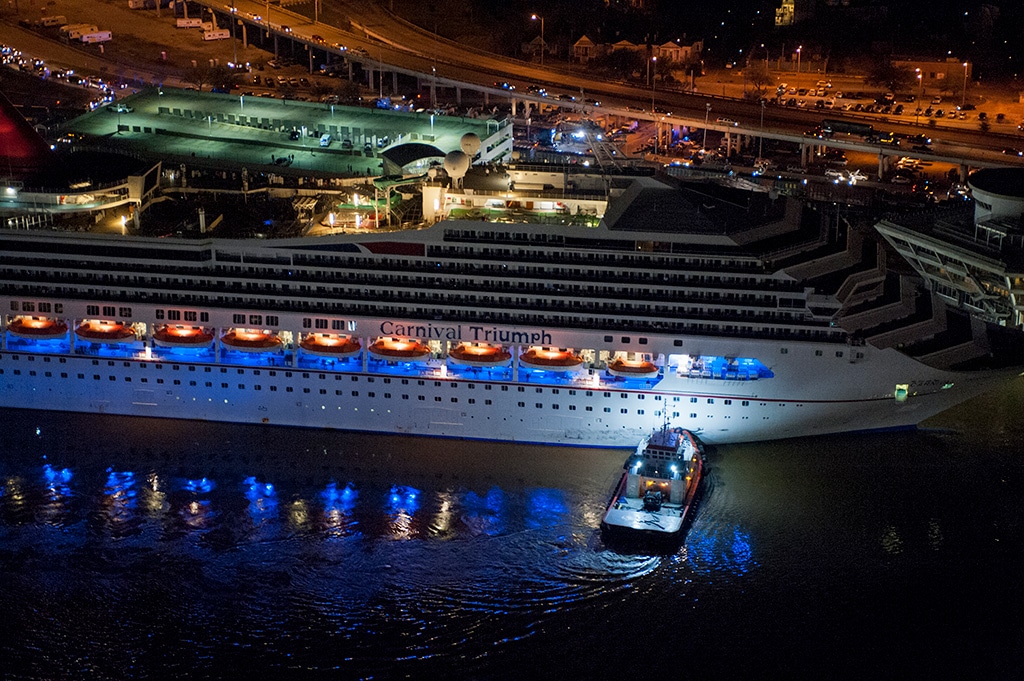
What Happened on the Carnival Triumph?
The trouble began on February 10, 2013, at around 5:30 a.m., when a fire broke out in the ship’s aft engine room due to a fuel leak from a flexible fuel oil return line that sprayed onto a hot surface. The fire was quickly extinguished, and no injuries were reported, but it caused catastrophic damage to the ship’s main electrical cables, knocking out power and propulsion. This left the Carnival Triumph stranded in the Gulf of Mexico, drifting aimlessly without air conditioning, refrigeration, lighting, or—most infamously—functioning toilets.
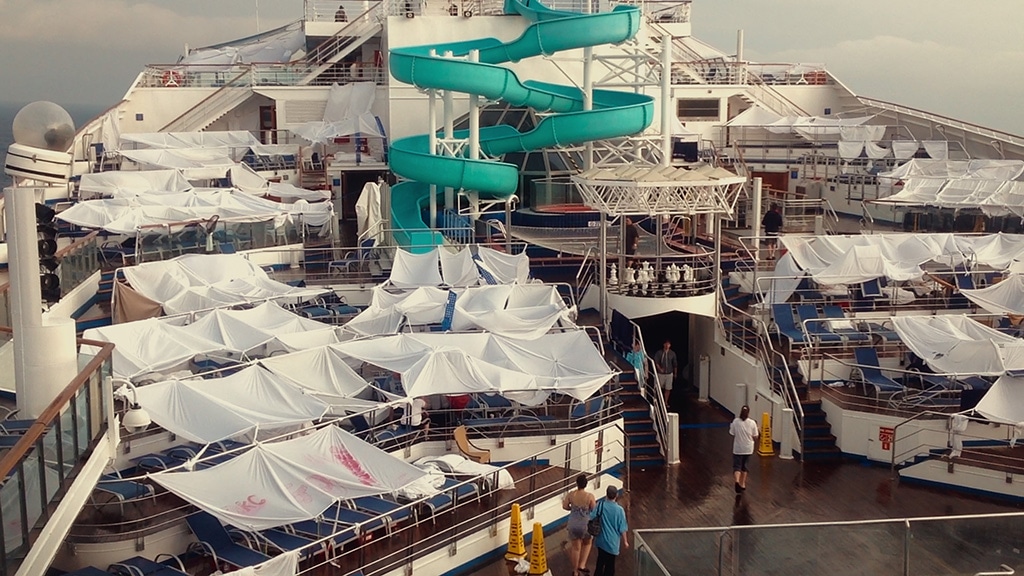
The loss of power crippled the ship’s vacuum-powered sewage system, leading to overflowing toilets and raw sewage spilling into cabins, hallways, and elevators. Passengers were instructed to urinate in showers and defecate in red biohazard bags, which were collected in corridors. However, many passengers refused to use the bags, exacerbating the unsanitary conditions. One crew member, a chef named Abhi, described the scene in a bathroom as a “poop lasagna”—layers of excrement piled with toilet paper. The ship’s tilt, caused by rough seas and tugboat positioning during rescue efforts, made matters worse, with sewage cascading down walls and soaking carpets.
Without refrigeration, perishable food was discarded, and the crew resorted to serving meager “lettuce sandwiches” to sustain the 4,000-plus people on board. The lack of air conditioning turned cabins into stifling ovens, forcing passengers to drag mattresses onto the deck, where they created makeshift “tent cities” using sheets for shade. Social order frayed as passengers fought over limited food, deck space, and lounge chairs. In a misguided attempt to lift spirits, the crew opened a free bar, which led to chaos, with some passengers urinating off the ship’s side, throwing biohazard bags onto lifeboats, and even engaging in public altercations.
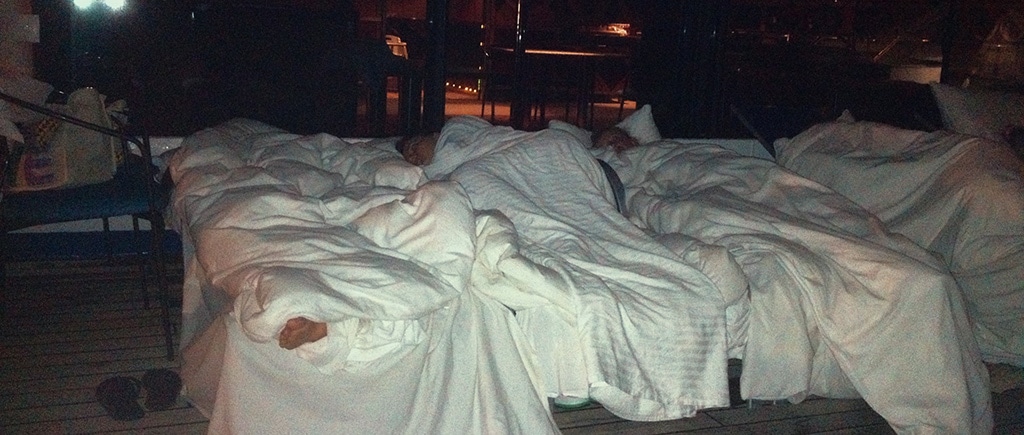
The ship drifted for nearly five days, initially expected to be towed to Progreso, Mexico, but strong currents pushed it north, leading to a decision to tow it to Mobile, Alabama. This extended the ordeal, with tugboats struggling against rough seas. Passengers had no cell service initially, though some briefly connected via Wi-Fi from a passing ship, allowing them to share videos and photos that fueled media frenzy. By February 14, 2013, the ship finally reached Mobile, where passengers disembarked, many kissing the ground in relief.
Why Was It Called the “Poop Cruise”?
The term “Poop Cruise” emerged from the media and public as news outlets like CNN, spurred by passenger accounts and social media, highlighted the grotesque sanitary conditions. The vivid imagery of sewage flooding the ship, combined with passengers’ desperate measures to cope, captured global attention. Late-night shows like The Daily Show and Saturday Night Live ran satirical sketches, and the hashtag #PoopCruise trended, cementing the nickname. The Netflix documentary notes that the media’s fixation on the scatological details turned the incident into a darkly comedic spectacle, though for those on board, it was a traumatic experience.
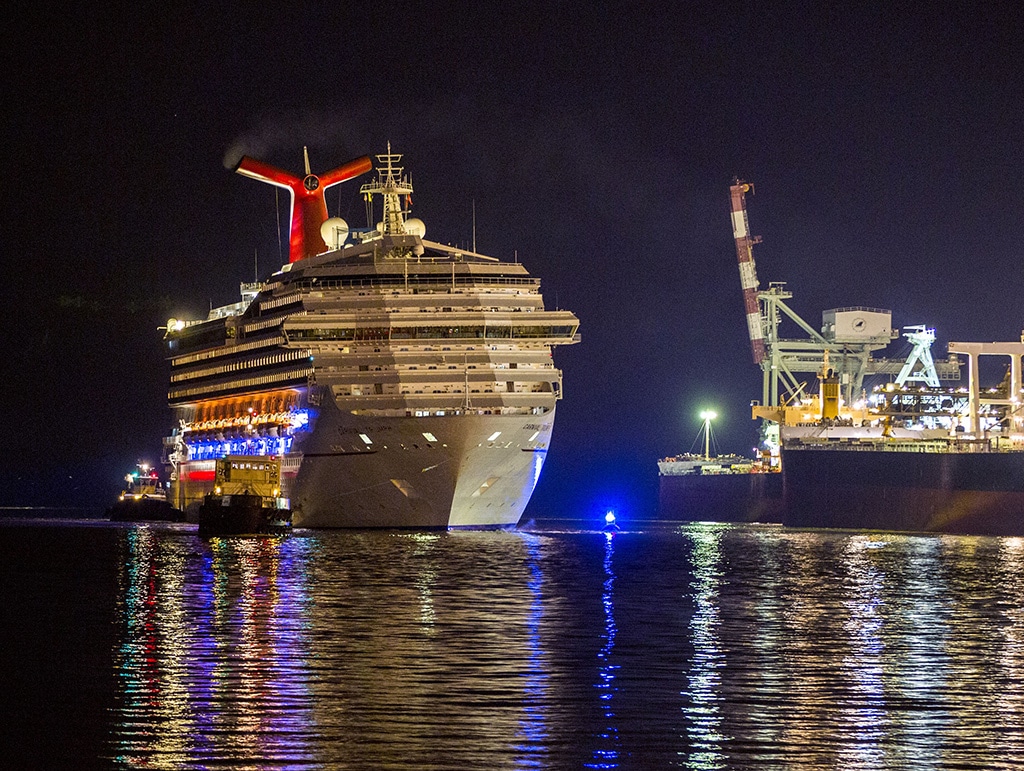
The Aftermath and Industry Impact
Carnival’s initial response downplayed the crisis, with a statement on February 10 claiming the ship was merely without propulsion and that the crew was working to restore it. However, as passenger videos and family reports reached the media, the full extent of the disaster became undeniable. Carnival eventually issued an apology from then-CEO Gerry Cahill, offered full refunds, $500 per passenger, travel expense reimbursements, and a free future cruise. Lawsuits followed, with passengers like Bettina Rodriguez citing “unseaworthy, unsafe, unsanitary” conditions. A 2016 settlement resolved many claims, though the fine print in Carnival’s ticket contracts limited passengers’ legal recourse.
The incident exposed vulnerabilities in cruise ship design and operations. Investigations revealed Carnival was aware of fuel leak risks and generator issues prior to the voyage, with maintenance overdue on the Triumph’s diesel generator. The Bahamas Maritime Authority, which investigated due to the ship’s Bahamian flag, confirmed the fire’s cause as a preventable fuel leak. In response, Carnival invested over $500 million in fleet-wide upgrades, including enhanced fire prevention, backup power systems, and redundant engine rooms to ensure critical systems like toilets could function during outages. The industry also adopted the Cruise Passenger Bill of Rights, guaranteeing refunds and disembarkation rights in cases of mechanical failure, though stronger protections like the proposed Cruise Passenger Protection Act have yet to pass as of July 2025.
The Carnival Triumph was refurbished in 2019 for $200 million and renamed the Carnival Sunrise, still sailing today from Miami to the Caribbean. However, the Trainwreck: Poop Cruise documentary, released June 24, 2025, and viewed over 7.3 million times, has reignited public fascination and horror. Some TikTokers, like Sarah Elizabeth, were shocked to learn they had sailed on the renamed ship years later, with many vowing never to cruise again after watching the film.
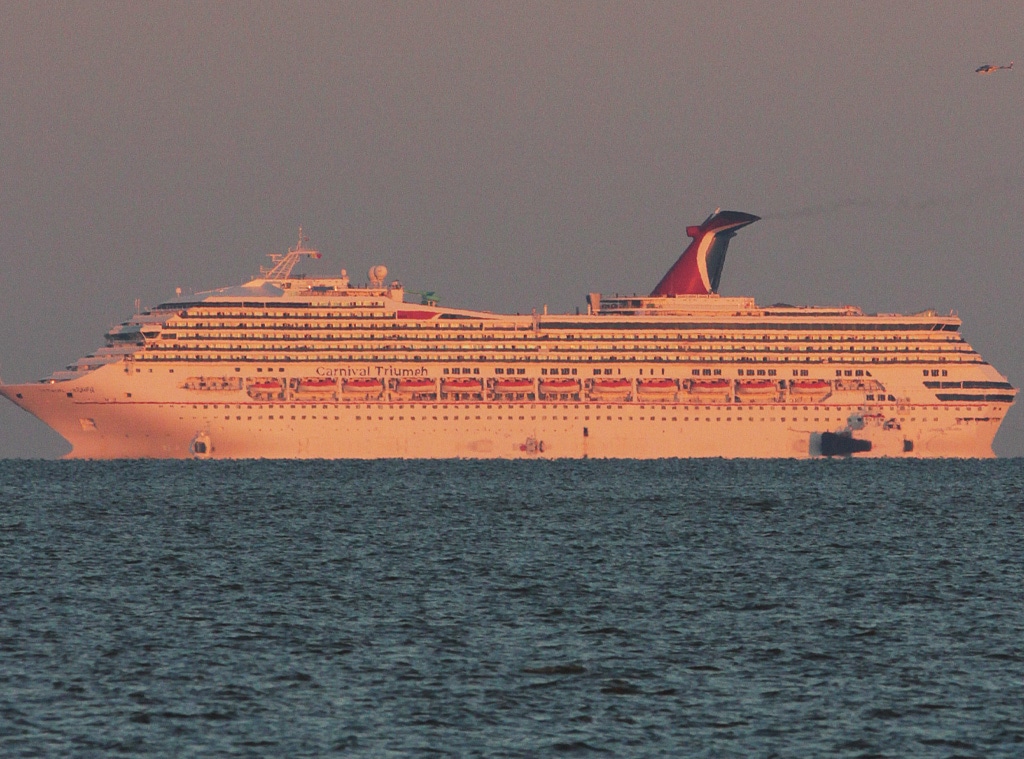
Human Nature and Lasting Lessons
The “Poop Cruise” is more than a tale of mechanical failure; it’s a study in human behavior under stress. The documentary highlights how quickly social norms broke down, with passengers hoarding food, fighting over space, and refusing to follow sanitation protocols, worsening the crisis. Yet, it also showcases resilience, with crew members like cruise director Jen Baxter and chef Abhi working tirelessly to maintain order and morale. Passengers like Larry Poret, who was with his daughter Rebekah, found silver linings, cherishing their bond despite the ordeal.
The incident remains a cultural touchstone, blending horror and humor. As director James Ross notes, the story’s layers go beyond the “poop” angle, revealing corporate missteps, passenger entitlement, and the cruise industry’s vulnerabilities. While cruising has since become safer, with millions sailing annually, the “Poop Cruise” serves as a reminder of how quickly luxury can turn to chaos when systems—and people—fail.


